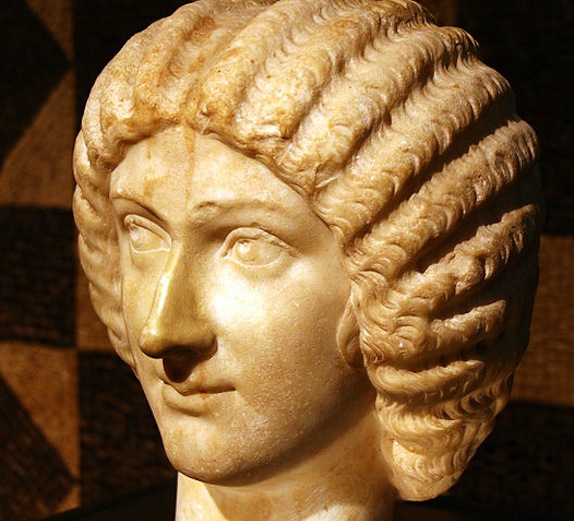This Woman Is a Hair-Style Archaeologist
Like a superhero of the coiffe, Janet Stephens spends her days as a regular hair dresser and her nights recreating the hairstyles of ancient Rome

Image: Wikimedia Commons
It’s easy to look back on fashions and hairstyles of yesterday and think, “What?” (Or perhaps, more honestly, “Why?”) But one woman is more interested in the “how.” As in: “How did Roman women make their hair look like that?”
Meet Janet Stephens, a hairdresser from Baltimore. Like a superhero of the coiffe, she spends her days as a regular hair dresser, giving people layers and funky bobs. But at home, in her secret hair lair (okay, really just her basement) she attempts to recreate the hairstyles of ancient Rome. Her YouTube channel boasts all sorts of ancient hairstyles, from the Empress Plotina to Cleopatra’s coin hair.
Her first foray into YouTube, published two years ago, recreated the empress Julia Domna’s hair using tools that the Romans would have had:
But Stephens doesn’t just recreate these do’s for YouTube. She also publishes about her research in scientific journals. One paper, called Ancient Roman hairdressing: on (hair)pins and needles, described the difficulties and tools required to recreate Roman hairdos. Many historians had assumed that ancient women depicted with gravity defying curls, bumps and buns were wearing wigs. But, as Stephens told The Wall Street Journal, when she first heard the wig theory, she wasn’t sold:
Through trial and error she found that she could achieve the hairstyle by sewing the braids and bits together, using a needle. She dug deeper into art and fashion history books, looking for references to stitching.
In 2005, she had a breakthrough. Studying translations of Roman literature, Ms. Stephens says, she realized the Latin term “acus” was probably being misunderstood in the context of hairdressing. Acus has several meanings including a “single-prong hairpin” or “needle and thread,” she says. Translators generally went with “hairpin.”
And the journals quickly recognized her expertise. John Humphrey, the editor of the Journal of Roman Archaeology told the Wall Street Journal: ”I could tell even from the first version that it was a very serious piece of experimental archaeology which no scholar who was not a hairdresser—in other words, no scholar—would have been able to write.”
More from Smithsonian.com:
The History of the Flapper, Part 4: Emboldened by the Bob
Bangs, Bobs and Bouffants: The Roots of the First Lady’s Tresses
/https://tf-cmsv2-smithsonianmag-media.s3.amazonaws.com/accounts/headshot/Rose-Eveleth-240.jpg)
/https://tf-cmsv2-smithsonianmag-media.s3.amazonaws.com/accounts/headshot/Rose-Eveleth-240.jpg)